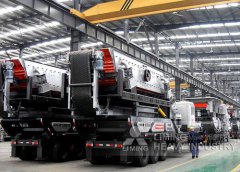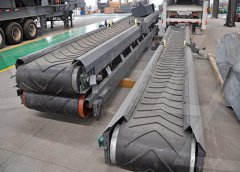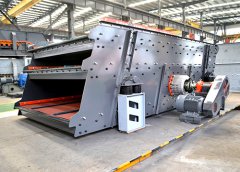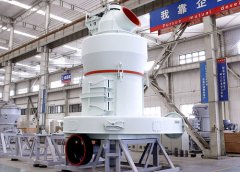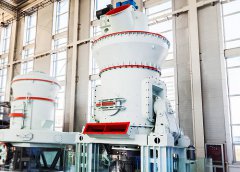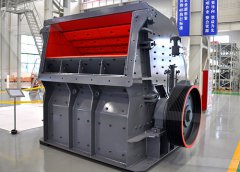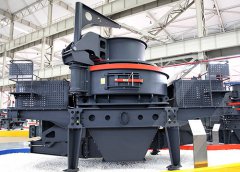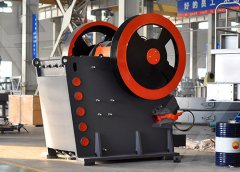
Development of coal-derived carbon-based structural unit as
This study aims to develop CSU with nearly 100% coal-derived carbon material for structural application in buildings. The effects of pressing pressures, The Dankuni Coal Complex (WB) carbonizes 1500 ton of non-caking coal per day to produce 100 ton of coke (smokeless domestic coke), 18–20 million ft 3 of gas and 75–80 Coal Carbonization an overview ScienceDirect Topics
احصل على السعر
The Carbonisation of Coal SpringerLink
Abstract. Carbonisation is the term used to denote the heating of coal in the absence of air. In these circumstances, volatile matter (VM) is removed. The volatiles are higher in Coal carbonization involves the destructive distillation of coal, and during this process, as much as 50% of the weight of the coal feedstock is driven off as gaseous 10 Coal Carbonisation ScienceDirect
احصل على السعر
Carbonization of Coal UNESCO
Carbonization of coal, thermal decomposition of coals in the absence of air, represents one of the largest utilizations of coal, and is an essential process for Various energy conversion pathways involving carbon-based resources (e.g., coal, natural gas, biomass, waste plastics) such as combustion, gasification, and Carbon mineralization pathways for carbon capture, storage
احصل على السعر
Laboratory-Scale Integrated Coke Dry Quenching
bonization equipment generally uses either a metal box or wooden box as packing and shifting the coal inside the hot furnaces for carbonization. The biggest Abstract. The coal industry is crucial for guaranteeing China’s energy security and achieving the carbon peaking and carbon neutralization (i.e., “dual carbon”) goals. Therefore, it is Strategic Conception of Carbon Neutralization in Coal Industry
احصل على السعر
Coal Carbonization an overview ScienceDirect Topics
The Dankuni Coal Complex (WB) carbonizes 1500 ton of non-caking coal per day to produce 100 ton of coke (smokeless domestic coke), 18–20 million ft 3 of gas and 75–80 ton of tar chemicals, which includes phenol, cresol of different grade, xylenol and HBTA. In addition, 5500 ton (NH 4) 2 SO 4 (fertilizer grade) made.a pilot oven of 250 kg coal charging capacity, with the facility of both top and stamp chargings. The functional pilot coke oven of this size for carbonization test is expensive and requires a large number of samples and time. To prevail over these limitations, a small-scale car-bonization equipment was designed and developed in RDCIS.Laboratory-Scale Integrated Coke Dry Quenching
احصل على السعر
Technoeconomic analysis of co-hydrothermal
The aim of this research was to evaluate the technoeconomic prospect of hydrochar production through co-hydrothermal carbonization of coal waste (CW) and food waste (FW). A process flow Carbonization test using pilot coke oven is an important laboratory-scale analysis to evaluate coke-making ability of metallurgical coals. RDCIS, SAIL, comprises a pilot oven of 250 kg coal charging capacity, with the facility of both top and stamp chargings. The functional pilot coke oven of this size for carbonization test is expensive and requires Laboratory-Scale Integrated Coke Dry Quenching System for Coal
احصل على السعر
Carbonization Furnace The Complete Guide For Your
A carbonization furnace is a type of industrial furnace that is used to convert organic materials, such as wood, coal, rice husk, coconut, and biomass, into carbon-rich products, such as charcoal or coke. The process of carbonization involves heating the organic material in an oxygen-deprived environment, which causes the material to break carbonization of coal waste (CW) and food waste (FW). A process flow diagram was developed that considered seven reactors, six pumps, and other necessary equipment for producing 49,192 kg/h hydrochar. Three different cases were considered for the economic analysis. Case II considered both CW and FW transportation cost while cases I and IIITechnoeconomic analysis of co-hydrothermal
احصل على السعر
Influence of coal properties on coal conversion processes-coal
The chemical constituents present in coal structure impact greatly on its mechanical behavior. The composition of organic matter and its degree of decomposition led to varying coal strength and modulus of elasticity of different coals (Pan et al. 2013; Singh and Mrityunjay 2018b; Ahamed et al. 2019) as the chemical structure was altered.Coals The properties of the carbon materials obtained as the final product of coal tar pitch carbonization process are a consequence of the type of chemical and physical phenomena occurring through the process. A new simplified approach for modeling of the primary carbonization is presented to provide the semi-quantitative knowledge about the Modeling the Coal Tar Pitch Primary Carbonization Process
احصل على السعر
Coal Carbonization for Coke Production IspatGuru
Coal carbonization is the process by which coal is heated and volatile products (liquid and gaseous) are driven off, leaving a solid residue called coke. Carbonization of coal involves heating coal to high temperatures either in the absence of oxygen (O2) or in control quantity of O2. A gaseous by-product referred to as coke oven Abstract. Carbonisation is the term used to denote the heating of coal in the absence of air. In these circumstances, volatile matter (VM) is removed. The volatiles are higher in hydrogen content than the basic coal, which therefore increases in carbon — hence, “carbonization”. As noted elsewhere, the off-gases can be useful; fuel gasesThe Carbonisation of Coal SpringerLink
احصل على السعر
Preparation and performance of coal-based activated carbon
To improve the utilization value of coal resources and optimize the production process of coal-based activated carbon, an L 9 (3 4) orthogonal experiment was designed to study the comprehensive effects of the carbonization temperature, heating rate, activation time and activator type on the specific surface area and iodine value of Coke-making equipment from coals has developed from the beehive oven to the jumbo coking reactor. Modern coke ovens are mainly composed of carbonization chambers, Carbonization of coal, thermal decomposition of coals in the absence of air, represents one of the largest utilizations of coal, and is an essential process for Carbonization of Coal UNESCO
احصل على السعر
Coal Activated Carbon Production Process Best Activated
Commonly used equipment mainly includes activated carbon rotary kilns, fluidized furnaces, and vertical carbonization furnaces. Coal-based activated carbon plant. Coal activated carbon is usually carbonized at a temperature of 350-600 °C. In the carbonization process, most of the non-carbon elements hydrogen and oxygen are firstlyCoke-making equipment from coals has developed from the beehive oven to the jumbo coking reactor. Modern coke ovens are mainly composed of carbonization chambers, Carbonization of coal, thermal decomposition of coals in the absence of air, represents one of the largest utilizations of coal, and is an essential process for Carbonization of Coal EOLSS
احصل على السعر
Techno-Economic Assessment of Co-Hydrothermal Carbonization of a Coal
Co-Hydrothermal Carbonization (Co-HTC) is a thermochemical process, where coal and biomass were treated simultaneously in subcritical water, resulting in bulk-homogenous hydrochar that is carbon-rich and a hydrophobic solid fuel with combustion characteristics like coal. In this study, technoeconomic analysis of Co-HTC was Saba et al. 95 presented a techno-economic assessment (TEA) on the use of miscanthus HC and a coal blend. They reported an estimated cost around 10.8 M€ for a HTC plant of 43 t HC/h capacityTechno-Economic Assessment of Co-Hydrothermal Carbonization of a Coal
احصل على السعر
Carbonization unit BIO-FURNACE ️ GreenPower
The carbonization furnace BIO-KILN is a patented, environmentally friendly, continuous installation for the thermal processing of plants materials. It is designed specifically for the production of high-quality charcoal or biochar as a raw material for the production of hookah charcoal, BBQ briquettes, activated carbon.This review article focuses on recent studies using hydrothermal carbonization (HTC) for producing hydrochar and its potential application as a solid fuel pellet. Due to the depletion of fossil fuels and increasing greenhouse gas (GHG) emissions, the need for carbon-neutral fuel sources has increased. Another environmental concern A Mini-Review: Biowaste-Derived Fuel Pellet by
احصل على السعر
10 Coal Carbonisation ScienceDirect
This chapter discusses coal carbonization. Coal carbonization involves the destructive distillation of coal, and during this process, as much as 50% of the weight of the coal feedstock is driven off as gaseous and volatile components. These are regarded as by-products of the coking process, and include combustible gases (for example, methane
احصل على السعر
